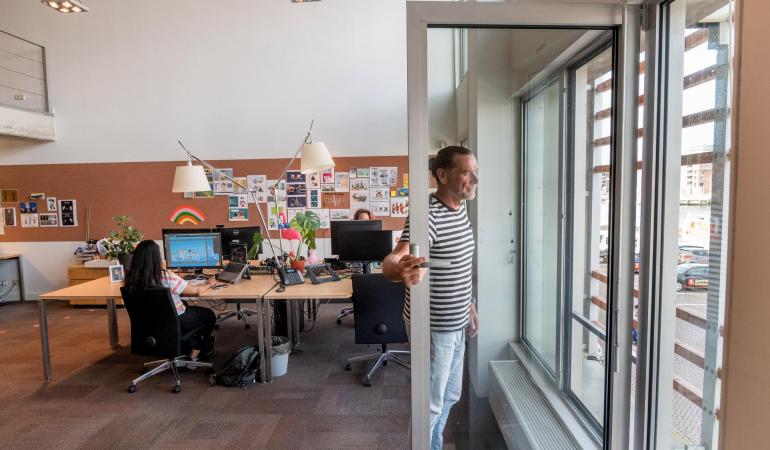
RIVM has calculated the impact of different ventilation rates on the number of people who become ill due to aerogenic transmission of the coronavirus SARS-CoV-2 in indoor spaces. The difference between no ventilation at all and ventilation according to the minimum Dutch requirements causes the largest decrease in the projected number of people with COVID-19 who have symptoms.
Ventilation helps to limit aerogenic transmission of the coronavirus. Aerogenic transmission is infection caused by inhaling virus particles carried in tiny droplets that remain suspended in the air for a long time and float farther across the room. Ventilating refreshes the air inside a room by bringing in air from outdoors. The researchers used scientific models to calculate the extent to which different ventilation rates would reduce the number of people with COVID-19 who have symptoms. The impact was determined for various scenarios, including a nightclub, a classroom, a concert venue and an office space.
According to the calculations, the biggest difference was observed between no ventilation at all, and ventilation according to the minimum ventilation requirements in the Netherlands, as defined in the Building Decree. The nightclub and concert venues showed a particularly significant decrease in projected cases of symptomatic COVID-19. Increasing ventilation beyond the minimum requirements does reduce the risk of aerogenic transmission, but has less impact in terms of reducing the projected number of people with COVID-19 who have symptoms.
More insight and resources to support policy
It is already well established that good ventilation is important for a healthy and pleasant indoor climate. Ventilation can also limit the spread of respiratory infections. However, it was unclear whether ventilation according to the Dutch ventilation requirements would be able to limit aerogenic transmission. The Ministry of Health, Welfare and Sport (VWS) therefore asked RIVM to calculate the impact of ventilation. These calculations provide a bit more insight into this complex issue. The report also gives the Cabinet additional resources for making policy choices about ventilation.
Basic measures remain important
In these calculations, RIVM only considered aerogenic transmission and did not look at direct infection within 1.5 metres. Ventilation can never completely prevent the spread of the coronavirus SARS-CoV-2. The other basic measures continue to be important in preventing the spread. Stay home if you have symptoms and get tested, stay 1.5 metres apart, and wash your hands regularly.